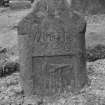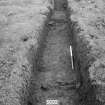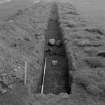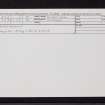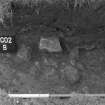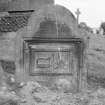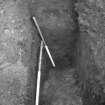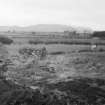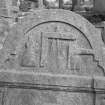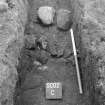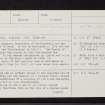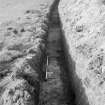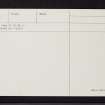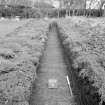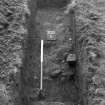Pricing Change
New pricing for orders of material from this site will come into place shortly. Charges for supply of digital images, digitisation on demand, prints and licensing will be altered.
Upcoming Maintenance
Please be advised that this website will undergo scheduled maintenance on the following dates:
Thursday, 9 January: 11:00 AM - 3:00 PM
Thursday, 23 January: 11:00 AM - 3:00 PM
Thursday, 30 January: 11:00 AM - 3:00 PM
During these times, some functionality such as image purchasing may be temporarily unavailable. We apologise for any inconvenience this may cause.
Scotlandwell Priory
Burial Ground (Medieval), Hospital (Medieval), Priory (Medieval)
Site Name Scotlandwell Priory
Classification Burial Ground (Medieval), Hospital (Medieval), Priory (Medieval)
Alternative Name(s) Well Caravan Site; Scotlandwell, St Mary's Hospital; Scotlandwell Priory
Canmore ID 27874
Site Number NO10SE 5
NGR NO 1866 0154
Datum OSGB36 - NGR
Permalink http://canmore.org.uk/site/27874
- Council Perth And Kinross
- Parish Portmoak (Perth And Kinross)
- Former Region Tayside
- Former District Perth And Kinross
- Former County Kinross-shire
NO10SE 5 1866 0154.
(NO 1866 0154) Hospital (NR) (Site of)
OS 6" map (1959)
The original foundation of Scotlandwell was the hospital of St Mary. It was in existence c.1214 but was granted to the Trinitarians in 1250-1. The family of Arnot occupied the priory in 1543 and ejected the community. It had become secularised by 1591-2 and it is mentioned as in the King's hands in 1606. The ruins of the building were in existence in Spottiswoode's time (d.1637) but have since disappeared.
D E Easson 1957; A H Millar 1895
There are no certain traces of the hospital but at the OS siting are the remains of a disused burial ground with the foundations of a building at its N end measuring about 20.0m E-W by 6.0m transversely. A plaque at the N end of the burial ground erroneously describes this as the site of a Culdee place of worship (see NO10SE 4).
Resurveyed at 1:2500.
Visited by OS (RD) 30 April 1972
An assessment was carried out (by Scottish Urban Archaeological Trust) in the field adjacent to the caravan site, and prior to development.
A small post-Reformation burial ground at the N of the field (not part of the development) probably overlies the site of the hospital and friary. The trenches were located as near to the burial ground as possible, to the S, W and E. Other than cultivation soil and possible drainage gullies, the only medieval features were concentrated to the SE of the burial ground. Here, a cobbled surface, possibly part of a courtyard, and a culvert, containing medieval pottery in the fills, may relate to either the hospital or friary.
Sponsor: Realm Construction.
R Coleman 1993.
Excavation (1993)
An assessment was carried out (by Scottish Urban Archaeological Trust) in the field adjacent to the caravan site, and prior to development.
A small post-Reformation burial ground at the N of the field (not part of the development) probably overlies the site of the hospital and friary. The trenches were located as near to the burial ground as possible, to the S, W and E. Other than cultivation soil and possible drainage gullies, the only medieval features were concentrated to the SE of the burial ground. Here, a cobbled surface, possibly part of a courtyard, and a culvert, containing medieval pottery in the fills, may relate to either the hospital or friary.
Sponsor: Realm Construction.
R Coleman 1993.
Field Visit (1997 - 2001)
Derek Hall managed an Historic Scotland funded project to record medieval hospital sites in Scotland. Gazetteers were produced for each regional council area between 1997 and 2001 with an overall review in 2001.






















